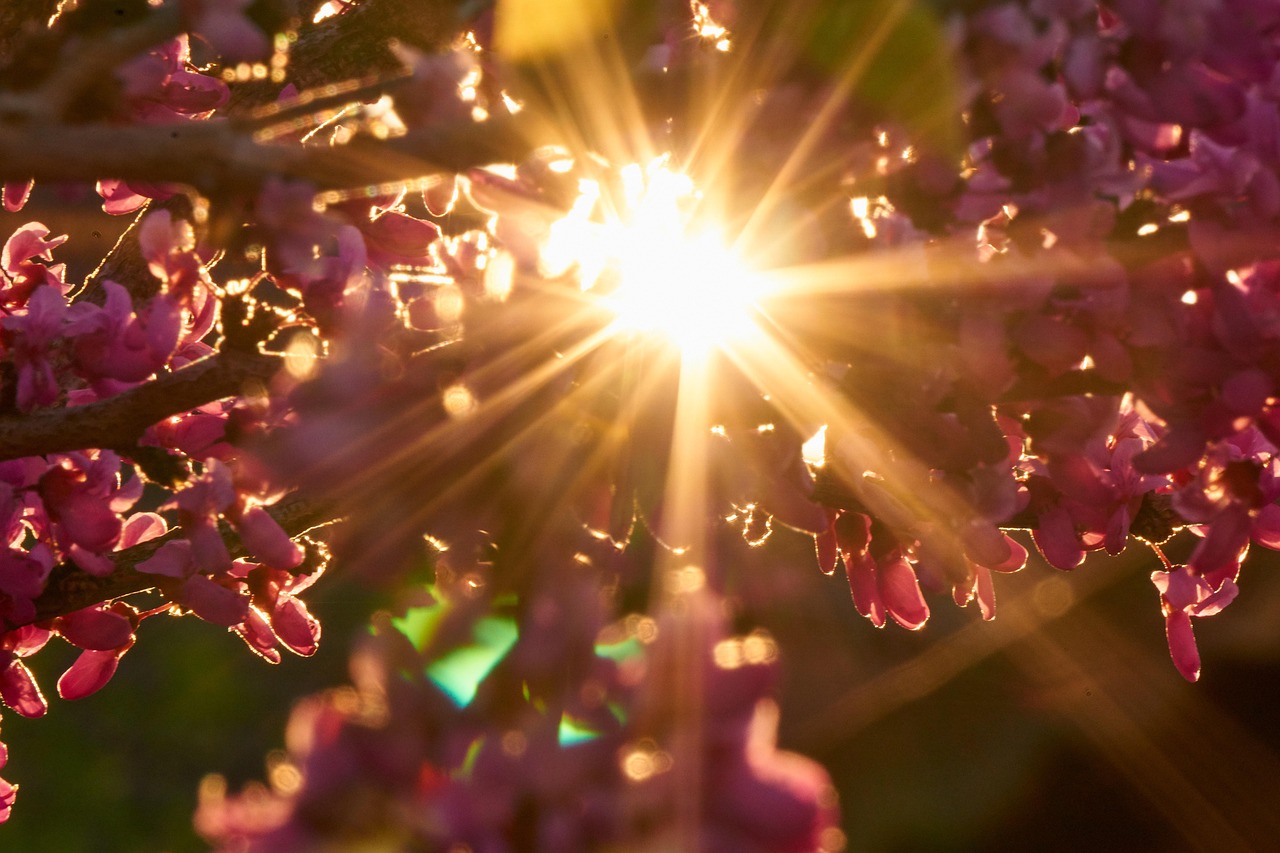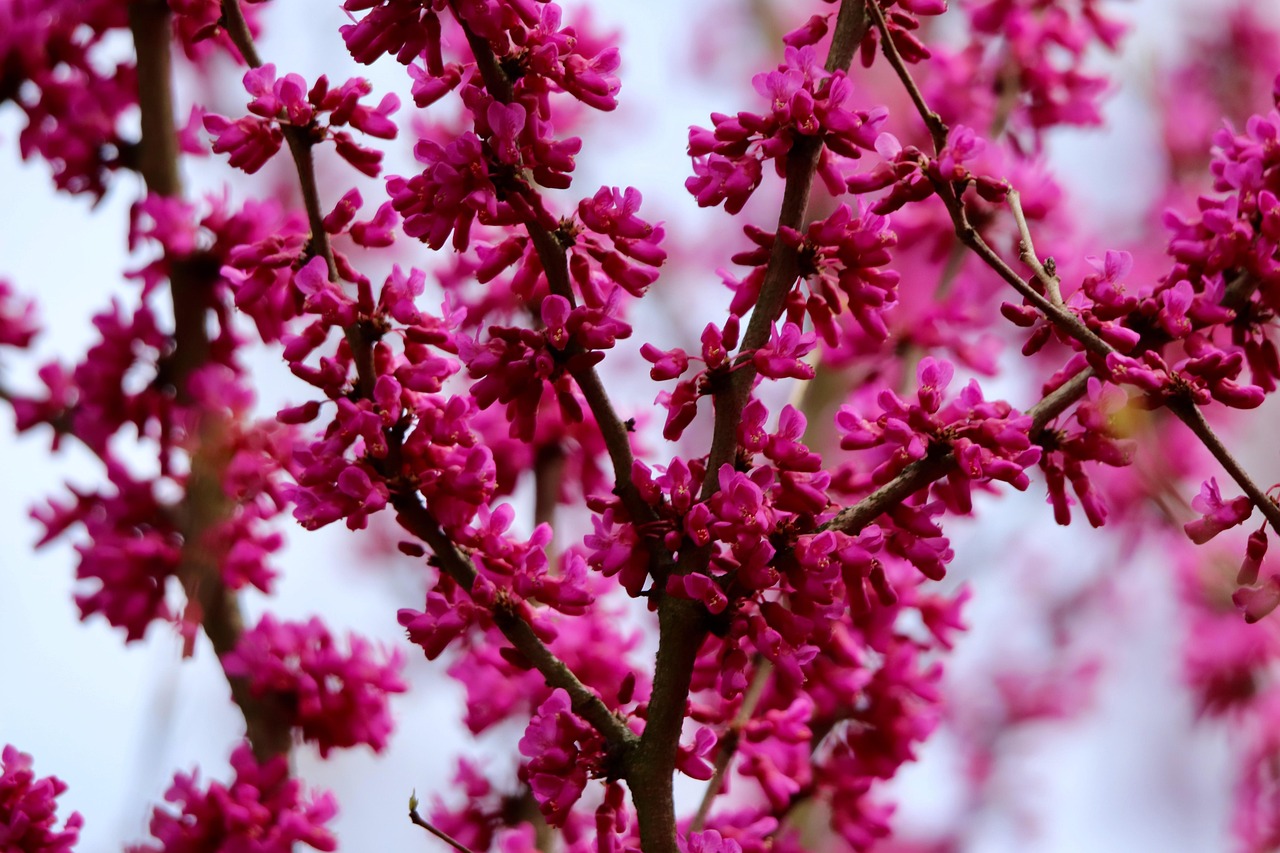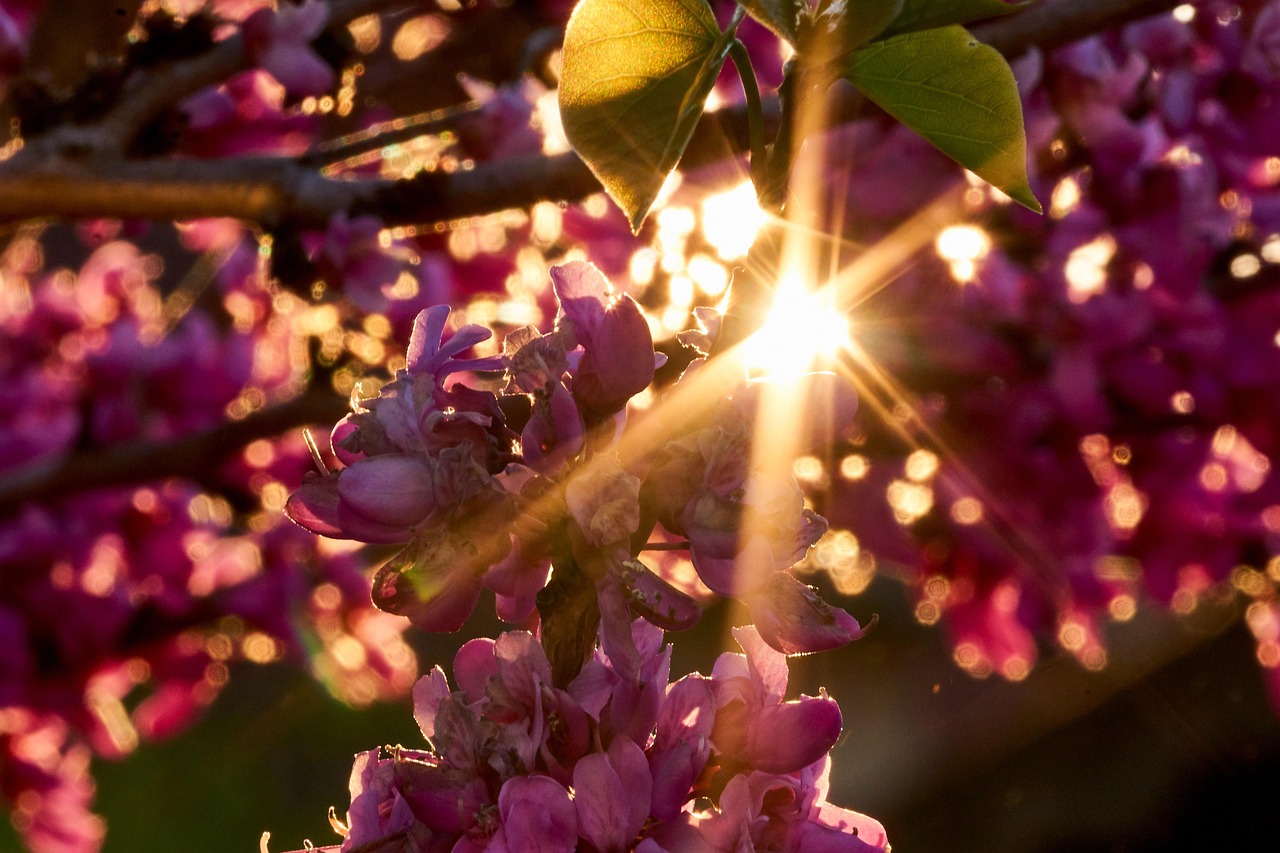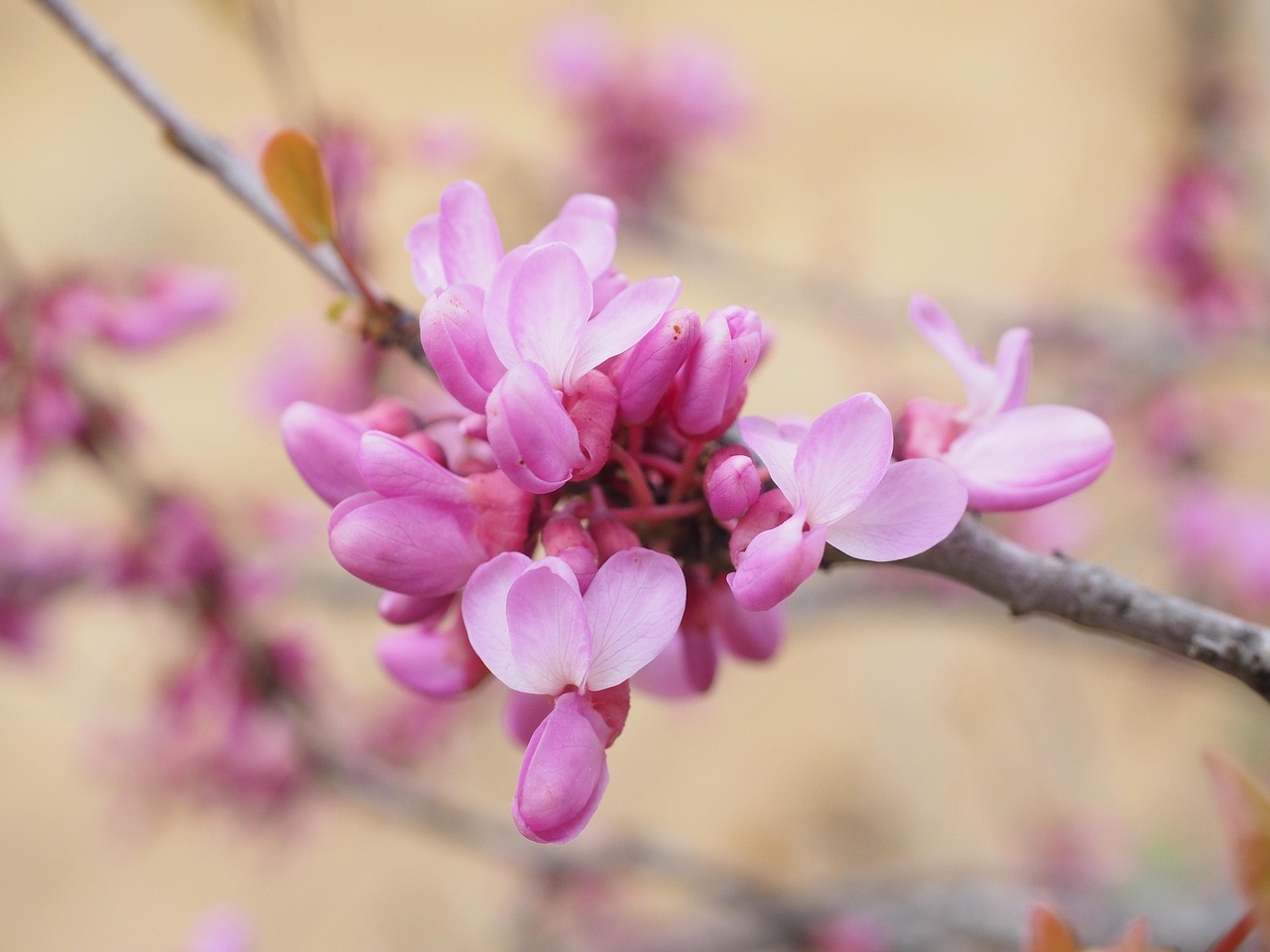The Judas tree, or Cercis siliquastrum, typically exhibits a moderate growth rate, reaching about 1 to 2 feet per year under optimal conditions. This makes it an attractive choice for spring flower visuals as it blooms profusely with stunning pink to purple flowers.
The Judas tree is renowned for its striking spring blossoms, which create a vibrant display in gardens and landscapes. Native to the Mediterranean region, this deciduous tree is particularly admired for its unique heart-shaped leaves and beautiful clusters of flowers that bloom before the leaves appear. The flowers are not only visually stunning but also serve as a significant attraction for pollinators, including bees and butterflies. Understanding the growth rate of the Judas tree is essential for gardeners and landscapers aiming to incorporate this beautiful species into their designs.

When considering the growth rate of the Judas tree, several factors come into play. These include the tree’s age, soil quality, climate conditions, and care practices. Proper attention to these factors can enhance its growth rate and overall health. Below are some key elements that influence the growth of the Judas tree:
- Soil Quality: Well-drained, loamy soil with a pH between 6.0 and 7.5 is ideal.
- Sunlight: The Judas tree thrives in full sun, requiring at least six hours of direct sunlight daily.
- Watering: Regular watering is essential during dry spells, especially for young trees.
- Fertilization: A balanced fertilizer can support healthy growth during the growing season.
Growth Characteristics of the Judas Tree
The growth characteristics of the Judas tree make it a unique addition to any landscape. It typically grows to a height of 20 to 30 feet and can spread 25 to 35 feet wide. The tree’s growth habit is often described as broad and rounded, creating a beautiful canopy. During spring, the Judas tree produces small, pea-like flowers that are often pink or purple. These flowers emerge directly from the branches and even the trunk, creating a dramatic effect.
One of the most notable features of the Judas tree is its ability to adapt to various environmental conditions. While it prefers well-drained soil and full sunlight, it can tolerate some drought once established. This resilience contributes to its popularity in various gardens and urban settings. Additionally, its unique flowering pattern makes it a focal point during the spring months, drawing attention from passersby.

Factors Affecting Growth Rate
Several factors can significantly influence the growth rate of a Judas tree. Understanding these factors can help ensure optimal conditions for blooming and overall health. Here are some critical aspects to consider:
| Factor | Impact on Growth Rate | Recommended Conditions |
|---|---|---|
| Soil Type | Affects nutrient availability and drainage. | Loamy soil with good drainage. |
| Light | Insufficient sunlight can slow growth. | Full sun (at least 6 hours daily). |
| Water | Inadequate water can stress the tree. | Regular watering during dry periods. |
| Temperature | Extreme temperatures can hinder growth. | Mild climates; protect from harsh winters. |
In addition to these factors, the age of the tree also plays a significant role in its growth rate. Young Judas trees often grow faster as they establish their root systems and adapt to their surroundings. However, as they mature, their growth rate may slow down but leads to more robust and resilient trees capable of withstanding various environmental challenges.
Cultivating a Judas tree requires patience and attention to detail. Gardeners must be mindful of its specific needs to ensure healthy growth and an impressive display of flowers each spring. By providing optimal conditions, you can enjoy the beauty of this remarkable tree for many years to come.

Optimal Growing Conditions for Judas Trees
To maximize the growth rate and flowering potential of Judas trees, it is essential to create optimal growing conditions. This involves careful attention to environmental factors, soil preparation, and ongoing care. Here are some vital considerations for cultivating healthy Judas trees.
Soil Preparation
A well-prepared soil foundation is crucial for the successful growth of a Judas tree. The following steps can help ensure that the soil is suitable:
- Testing Soil pH: Before planting, test the soil to determine its pH level. A pH between 6.0 and 7.5 is ideal for Judas trees.
- Amending Soil: If the soil is too acidic or alkaline, amendments such as lime or sulfur can be added to adjust the pH.
- Improving Drainage: If the soil retains too much moisture, consider adding organic matter like compost to improve drainage and aeration.
Watering Practices
Watering is another critical aspect of promoting healthy growth in Judas trees. Proper watering techniques can prevent stress and encourage robust development. Here are some best practices:
- Deep Watering: Water deeply but infrequently to encourage root growth. This helps the tree develop a strong root system.
- Avoiding Overwatering: Ensure that the tree is not sitting in waterlogged soil, which can lead to root rot.
- Monitoring Moisture: Use a moisture meter or check the top inch of soil to determine when to water.
Fertilization Strategy
Fertilization plays a significant role in supporting the growth rate and overall health of Judas trees. Applying the right nutrients at the right times can enhance flowering and foliage quality. Here are some recommendations for fertilization:

Types of Fertilizer
When choosing a fertilizer, consider the following options:
- Balanced Fertilizer: A general-purpose, balanced fertilizer (such as 10-10-10) can provide essential nutrients.
- Slow-Release Fertilizer: A slow-release option can supply nutrients gradually over time, reducing the risk of over-fertilization.
- Organic Fertilizer: Organic options, such as compost or well-rotted manure, can improve soil health while providing nutrients.
Application Timing
The timing of fertilization is just as important as the type of fertilizer used. Here’s a general guideline for application:
- Spring Application: Apply fertilizer in early spring, just before new growth begins.
- Mid-Season Check: A second application may be beneficial in mid-summer if growth appears sluggish.
- Fall Caution: Avoid fertilizing in late fall, as this can encourage new growth that may not survive winter temperatures.
Pest and Disease Management
Pest and disease issues can also impact the growth rate and health of Judas trees. Monitoring for common pests and diseases will help maintain the tree’s vitality. Here are some common concerns:
Common Pests
- Aphids: These small insects can suck sap from the leaves. Use insecticidal soap or neem oil for control.
- Spider Mites: Look for webbing on leaves. Increasing humidity can deter these pests, along with suitable insecticides.
- Caterpillars: Certain caterpillars may feed on the foliage. Hand-picking or targeted insecticides can help manage them.
Diseases to Watch For
Diseases can also affect Judas trees. Here are a few to monitor:
- Crown Gall: This bacterial disease causes galls on roots and stems. Remove infected parts and maintain proper sanitation.
- Leaf Spot: Fungal leaf spots can occur during wet seasons. Regularly remove fallen leaves to reduce fungal spread.
By adhering to these guidelines for growing conditions, watering practices, fertilization strategies, and pest management, gardeners can significantly enhance the growth rate of their Judas trees. This will lead to a more vibrant display of flowers each spring and a healthier overall tree.
Landscape Design with Judas Trees
The Judas tree can be a stunning feature in landscape design due to its unique aesthetic qualities. Its vibrant spring flowers and attractive foliage make it a popular choice for gardens, parks, and public spaces. Understanding how to effectively incorporate Judas trees into your landscape can enhance the overall beauty and visual interest of the area.
Planting Considerations
When planting a Judas tree, several factors should be considered to ensure that it thrives in its environment. Proper placement, spacing, and companion planting can significantly affect its success.
- Placement: Choose a location that receives full sun for optimal flowering. Avoid shaded areas that may hinder growth.
- Spacing: Judas trees can grow wide; ensure adequate space between them and other plants to prevent competition for light and nutrients. A distance of at least 15 to 20 feet is recommended.
- Companion Plants: Pair Judas trees with other flowering plants that bloom at different times to create a continuous display of color throughout the growing season.
Using Judas Trees as Focal Points
Judas trees work beautifully as focal points in garden design. Their striking appearance can draw the eye and create a centerpiece. Here are some ideas on how to use them effectively:
- Single Specimen Planting: Plant a single Judas tree in a prominent location, such as near an entrance or patio, to create an impressive visual impact.
- Group Planting: Plant several Judas trees in a cluster to form a stunning display of color during the blooming season.
- Framing Views: Use Judas trees to frame views or pathways, guiding visitors through the landscape while providing visual interest.
Seasonal Interest Beyond Spring
While the Judas tree is celebrated for its spring blooms, it also offers seasonal interest throughout the year. Understanding its characteristics in different seasons can help in planning a garden that remains visually appealing year-round.
Spring Blooms
The most notable feature of the Judas tree is its profusion of pink to purple flowers that appear in early spring. These blossoms typically emerge before the leaves, creating a striking contrast that attracts pollinators such as bees and butterflies.
Summer Foliage
As summer approaches, the heart-shaped leaves of the Judas tree develop a lush green canopy. The leaves remain vibrant throughout the season, providing shade and cooling effects in the landscape. This dense foliage can also serve as a backdrop for other flowering plants.
Autumn Color
In the fall, the leaves of the Judas tree transition to beautiful shades of yellow, orange, and red. This seasonal color change adds warmth and richness to the landscape, making it an attractive option for autumn gardens.
Winter Structure
During winter, the Judas tree’s bare branches reveal its structural beauty. The unique branching pattern provides visual interest even when devoid of leaves. This characteristic can be particularly appealing in winter gardens, where contrast against snow or frost enhances the overall aesthetic.
Caring for Mature Judas Trees
Mature Judas trees require ongoing care to maintain their health and appearance. Regular maintenance practices can ensure that they continue to thrive and flourish. Here are some care tips:
Pruning Techniques
Pruning is essential for maintaining the shape and health of mature Judas trees. The following techniques can help:
- Timing: Prune during late winter or early spring before new growth begins.
- Removing Deadwood: Regularly check for and remove any dead or diseased branches to promote healthy growth.
- Shaping: Lightly trim branches to maintain an open canopy and improve air circulation.
Mulching Practices
Applying mulch around the base of the tree can benefit its health significantly:
- Moisture Retention: Mulch helps retain soil moisture during dry periods, reducing the need for frequent watering.
- Weed Suppression: A layer of mulch can suppress weeds, decreasing competition for nutrients.
- Temperature Regulation: Mulch insulates the roots during extreme temperatures, protecting them from freezing or overheating.
Caring for mature Judas trees with these practices ensures they remain healthy and vibrant, providing beauty and visual interest in your landscape for many years.
Environmental Benefits of Judas Trees
In addition to their aesthetic appeal, Judas trees provide numerous environmental benefits. Incorporating these trees into landscapes can contribute positively to local ecosystems. Here are some of the key environmental advantages:
- Habitat for Wildlife: Judas trees attract various wildlife species, including pollinators like bees and butterflies. This makes them an essential component of a healthy ecosystem.
- Carbon Sequestration: Like all trees, Judas trees absorb carbon dioxide from the atmosphere, helping to mitigate climate change by storing carbon in their biomass.
- Soil Erosion Control: The root systems of Judas trees help stabilize soil. This can prevent erosion on slopes and in gardens, promoting soil health and preventing runoff.
- Improving Air Quality: Trees filter pollutants from the air, contributing to cleaner and healthier environments for communities.
Challenges and Limitations
While Judas trees offer many benefits, there are also challenges and limitations to consider. Understanding these can help gardeners make informed decisions about planting and care:
- Climate Sensitivity: Judas trees thrive best in mild climates. Extreme cold or prolonged drought can hinder growth and flowering.
- Maintenance Needs: Regular pruning and care are essential to maintain the tree’s health and appearance, requiring time and effort from the gardener.
- Potential for Pests: As mentioned earlier, Judas trees can be susceptible to pests and diseases. Careful monitoring is necessary to manage these issues effectively.
Cultural Significance
The Judas tree holds cultural significance in various regions. In some cultures, it symbolizes love and beauty due to its stunning spring blossoms. Additionally, its historical connections to folklore and mythology add layers of meaning. Understanding these cultural aspects can enrich one’s appreciation for this beautiful tree.
For example, in some interpretations of the Bible, the name “Judas tree” is linked to the story of Judas Iscariot. The tree is thought to have been the source of the wood used for Judas’ betrayal, which adds a poignant layer to its identity in certain cultures.
Conclusion
The Judas tree is a remarkable species that captures attention with its stunning spring flowers and attractive foliage throughout the seasons. By understanding its growth rate, optimal growing conditions, maintenance needs, and environmental benefits, gardeners can successfully incorporate this beautiful tree into their landscapes.
Whether as a focal point in a garden, a part of a mixed landscape design, or a contributor to local ecosystems, the Judas tree provides both beauty and functionality. Its ability to attract pollinators and improve air quality highlights its value beyond mere aesthetics.
Furthermore, being aware of its challenges allows gardeners to prepare adequately, ensuring that they can enjoy the many benefits this tree has to offer. The cultural significance of the Judas tree adds depth to its presence in gardens and public spaces, making it not just a plant but a symbol of beauty and resilience.
In conclusion, cultivating a Judas tree requires knowledge and commitment but rewards gardeners with stunning visuals and ecological benefits that enhance any landscape. With proper care, this striking tree can thrive for generations, celebrating the beauty of spring and enriching the environment.
